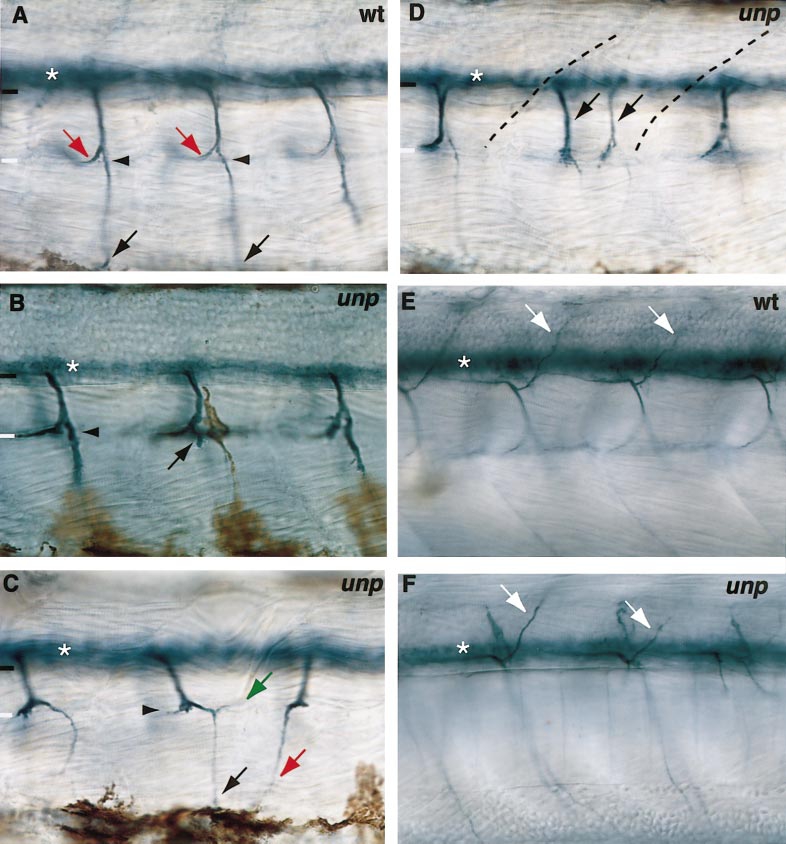Fig. 5 unplugged mutant embryos exhibit multiple secondary motor axon defects. Lateral views of wild-type (A, E) and unplugged mutant (B–D, F) embryos stained with zn-5 antibody at 45 (A–D) or 60 hpf (E, F). The zn-5 antibody recognizes cell bodies (white asterisk in A–F) and axons of secondary but not primary motor neurons. The common path is found between the lower end of the spinal cord (black line) and the horizontal myoseptum (white line). (A) In wild-type embryos, a ventral nerve extends into the ventral myotome (black arrow), a medial nerve extends rostrally along the horizontal myoseptum (red arrow), and a dorsal nerve projects into the dorsal myotome (white arrow in E). Note that the medial nerve defasciculates from the ventral root before reaching the choice point (black arrowhead), and then turns rostrally and projects along the horizontal myoseptum (red arrows in A). Ventral nerves stalled at the choice point (black arrow in B) or projected into the ventral myotome, but form an aberrant branch (green arrow) at the choice point (C). In a significant fraction of hemisegments the medial nerve invaded the ventral myotome (red arrow in C). (D) In 3–6% of unplugged somitic hemisegments, secondary motor axons exit the spinal cord as two independent trajectories (black arrows; somite boundaries are indicated by dashed lines). (E) At ∼60 hpf, zn-5 stains the dorsal nerves of secondary motor axons (white arrows). (F) In unplugged mutant embryos, dorsal nerves appear indistinguishable from those in wild-type embryos.
Reprinted from Developmental Biology, 240(2), Zhang, J., Malayaman, S., Davis, C., and Granato, M., A dual role for the zebrafish unplugged gene in motor axon pathfinding and pharyngeal development, 560-573, Copyright (2001) with permission from Elsevier. Full text @ Dev. Biol.

